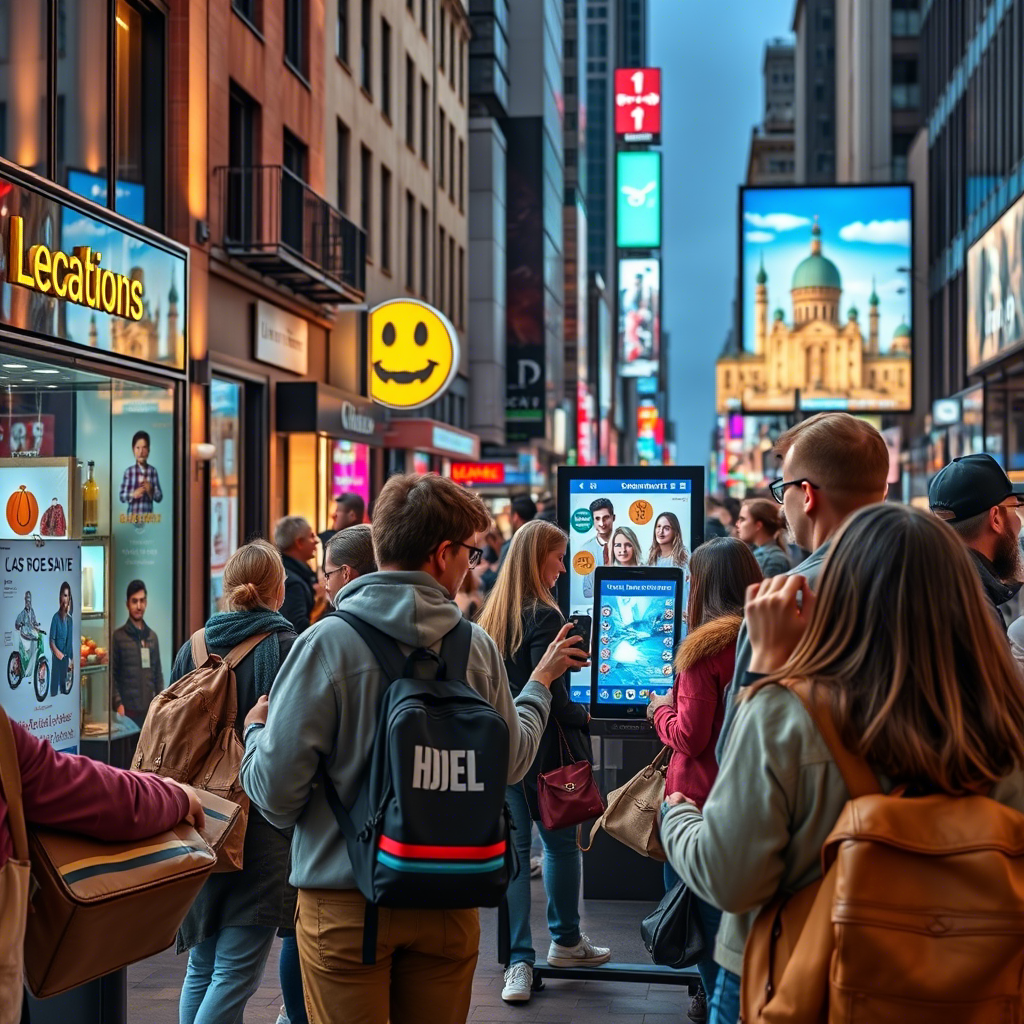Imagine walking into a store where the owner knows your name, your favorite products, and even remembers your last conversation. That kind of personal connection is powerful — and it’s exactly what location-specific content can help you build with your audience online.
In today’s digital world, businesses can no longer rely on generic marketing strategies to reach customers. Consumers are searching for brands that understand their local needs, speak their language, and reflect their community values. Whether you own a small coffee shop in Austin or run a service-based business in Chicago, creating content tailored to your specific location isn’t just helpful — it’s essential.
This article will guide you through practical and effective ways to create location-specific content that resonates with local customers. You’ll learn how to research your audience, optimize for local SEO, personalize your messaging, leverage local events, and build trust through community engagement. By the end, you’ll have a clear roadmap to attract more local traffic, increase conversions, and grow your business right where it matters most — in your neighborhood.
Let’s dive in!
1. Understand Your Local Audience: Research Is Key
Before crafting any content, it’s crucial to know who you’re speaking to. Understanding your local audience means going beyond basic demographics like age and gender. It involves diving deep into their daily lives, habits, preferences, and even the way they communicate.
Start by researching the neighborhoods your customers come from. What are their common interests? What problems do they face that your business can solve? Tools like Google Analytics, Facebook Insights, and local surveys can give you valuable data about your audience’s behavior and preferences.
For example, if you run a pet grooming business in Portland, Oregon, you might discover that many of your customers are environmentally conscious. That insight could shape your content around eco-friendly services or sustainable pet care practices — topics that resonate deeply with your local audience.
Also, pay attention to local lingo or phrases unique to your area. Using familiar terms builds rapport and makes your content feel more authentic. This kind of research not only helps you connect better with your audience but also improves the effectiveness of your marketing efforts.
By truly knowing your local audience, you’re setting the stage for content that feels personal, relevant, and compelling — which is exactly what drives customer loyalty and engagement.
2. Optimize for Local SEO: Make Yourself Easy to Find
Even the best content won’t help if people can’t find you. That’s where local SEO comes in. Optimizing your website and online presence for local search ensures that when someone searches for a product or service “near me” or in your city, your business appears front and center.
Start with your Google Business Profile (formerly Google My Business). This free tool allows you to manage how your business shows up on Google Maps and Search. Be sure to fill out every section — including your address, phone number, hours, and categories — so potential customers get accurate information.
Next, incorporate location-specific keywords into your website content. Instead of using generic terms like “plumber,” target something like “emergency plumber in Denver.” Use tools like Google Keyword Planner, Ahrefs, or SEMrush to find popular local search terms related to your industry.
Don’t forget about local citations — mentions of your business name, address, and phone number across other websites like Yelp, Yellow Pages, and local directories. Consistency is key here; make sure all listings match exactly to avoid confusing both customers and search engines.
Lastly, encourage satisfied customers to leave reviews on Google and other platforms. Positive reviews not only boost your visibility but also build trust with new visitors. With strong local SEO, you’re not just attracting clicks — you’re drawing in real, local customers.
3. Personalize Your Messaging: Speak Their Language
Once you’ve identified your audience and optimized your site, it’s time to craft messages that feel personal and meaningful. Personalization goes beyond just mentioning a city or town — it’s about making your audience feel seen, understood, and valued.
One of the simplest ways to do this is by featuring local landmarks, neighborhoods, or even weather-related tips in your content. For instance, a roofing company in Phoenix could publish a post titled “How to Protect Your Roof During Phoenix’s Summer Heatwave.” This not only targets local keywords but also speaks directly to a concern your neighbors face regularly.
Email marketing is another powerful tool for personalization. Segment your email list by location and send targeted offers or news based on local events or holidays. If you run a bakery in Boston, sending a special Saint Patrick’s Day cupcake promotion to subscribers in South Boston could lead to a spike in foot traffic.
You can also use geo-targeting in your paid ads. Platforms like Facebook and Google Ads allow you to show different versions of an ad to users in different locations. This ensures your message stays relevant and increases the likelihood of conversion.
Remember, people don’t just buy products or services — they buy experiences, connections, and solutions that fit their lifestyle. When your content reflects their world, they’re much more likely to respond positively.
4. Leverage Local Events and Culture: Build Community Connection
Local events and cultural touchpoints offer rich opportunities to engage with your community and showcase your brand’s personality. Whether it’s a farmer’s market, annual parade, or a local sports tournament, participating in or referencing these events can significantly boost your relevance.
Start by attending or sponsoring local events. This gives you a chance to interact face-to-face with potential customers while also building goodwill in the community. Then, promote your involvement through social media posts, blog articles, or videos. Not only does this highlight your local presence, but it also creates shareable content that others may engage with organically.
Another great strategy is to create content around seasonal traditions or holidays unique to your area. A florist in New Orleans might publish a guide on “Mardi Gras Flower Arrangements” every February. Similarly, a fitness studio in Colorado could release a post on “Staying Active During Winter Snow Days.”
You can also collaborate with other local businesses or influencers. Cross-promotions or guest blogs can introduce your brand to new audiences while reinforcing your commitment to the community.
By tapping into local culture, you position your business as part of the neighborhood — not just a place people visit, but a trusted member of the community. And that kind of connection can turn casual visitors into lifelong customers.
5. Showcase Testimonials and Local Success Stories
There’s no better way to build trust than by letting your happy customers do the talking. Featuring testimonials and success stories from real people in your area adds credibility and makes your business more relatable.
Create dedicated pages or sections on your website for customer reviews. Highlight those that mention specific local details — like a client from downtown Seattle or a family in Miami Beach — to reinforce your local presence. Video testimonials are especially powerful, as they add a human element and make the experience feel more authentic.
Case studies or before-and-after stories are also excellent for demonstrating value. For example, a landscaping company in Atlanta could write a short story about transforming a neglected backyard in Buckhead into a stunning outdoor living space. These narratives not only showcase your expertise but also appeal emotionally to readers facing similar challenges.
Encourage satisfied customers to leave reviews on Google, Facebook, and industry-specific platforms. Offer incentives like discounts or entry into a prize draw in exchange for honest feedback — just be sure not to ask for positive reviews specifically.
When potential customers see others in their own neighborhood benefiting from your services, they’re far more likely to take action. After all, word-of-mouth remains one of the most powerful forms of marketing — especially when it comes from people just like them.
Conclusion
Creating location-specific content isn’t just about reaching more people — it’s about connecting more deeply with the ones who matter most: your local customers.
From understanding your audience and optimizing for local SEO, to personalizing your messaging and celebrating local culture, each step we’ve covered plays a vital role in building trust, driving engagement, and growing your business.
But remember, this isn’t a one-time effort. The needs and preferences of your community evolve, and so should your content. Stay curious, keep listening, and always look for ways to reflect the life and spirit of your neighborhood in everything you create.
Now it’s your turn! Start applying these strategies today — whether it’s updating your Google Business listing, launching a hyper-local campaign, or sharing a customer story from your town. Small actions can lead to big results when done consistently and with purpose.
Have questions or want to share your own local marketing success story? Leave a comment below — we’d love to hear from you. Let’s build stronger, more connected communities — one piece of content at a time.




